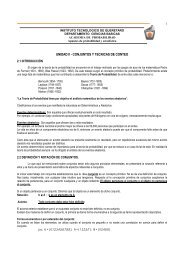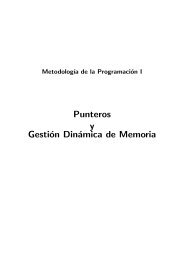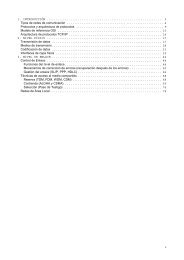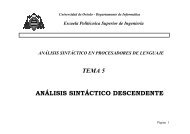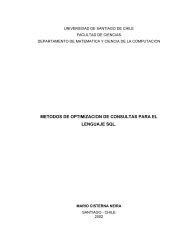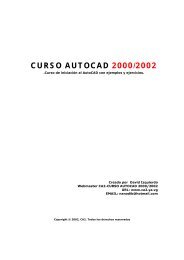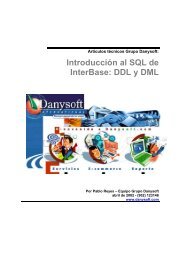Tema 3: El nivel de lenguaje máquina - Blearning
Tema 3: El nivel de lenguaje máquina - Blearning
Tema 3: El nivel de lenguaje máquina - Blearning
You also want an ePaper? Increase the reach of your titles
YUMPU automatically turns print PDFs into web optimized ePapers that Google loves.
Tipos y tamaños <strong>de</strong> los operandos<br />
• Tipos <strong>de</strong> operandos<br />
– Bit:<br />
• 0,1<br />
– Carácter<br />
• ASCII <strong>de</strong> 7 u 8 bits (extensiones gráficas)<br />
• EBCDIC <strong>de</strong> 8 bits (utilizado por los gran<strong>de</strong>s computadores IBM)<br />
– Enteros<br />
• Números positivos y negativos representados en complemento a 2.<br />
• Byte: 8 bits<br />
• Media palabra (half-word): 16 bits<br />
• Palabra: 32 bits<br />
– Punto flotante<br />
• IEEE 754: Estándar para la representación en punto flotante.<br />
• Simple precisión (32 bits) y doble precisión (64 bits).<br />
– Decimal<br />
• Decimal empaquetado: Decimal codificado en binario (BCD), 4 bits para<br />
cada dígito, dos dígitos por byte. Ejemplo: 01001001 -> 49<br />
• Decimal no empaquetado. Ejemplo: 00000100 00001001 -> 4 9<br />
Fundamento <strong>de</strong> Computadores (1º II) Cap 2: <strong>El</strong> <strong>nivel</strong> <strong>de</strong> <strong>lenguaje</strong> <strong>máquina</strong> 24 <strong>de</strong> 64



